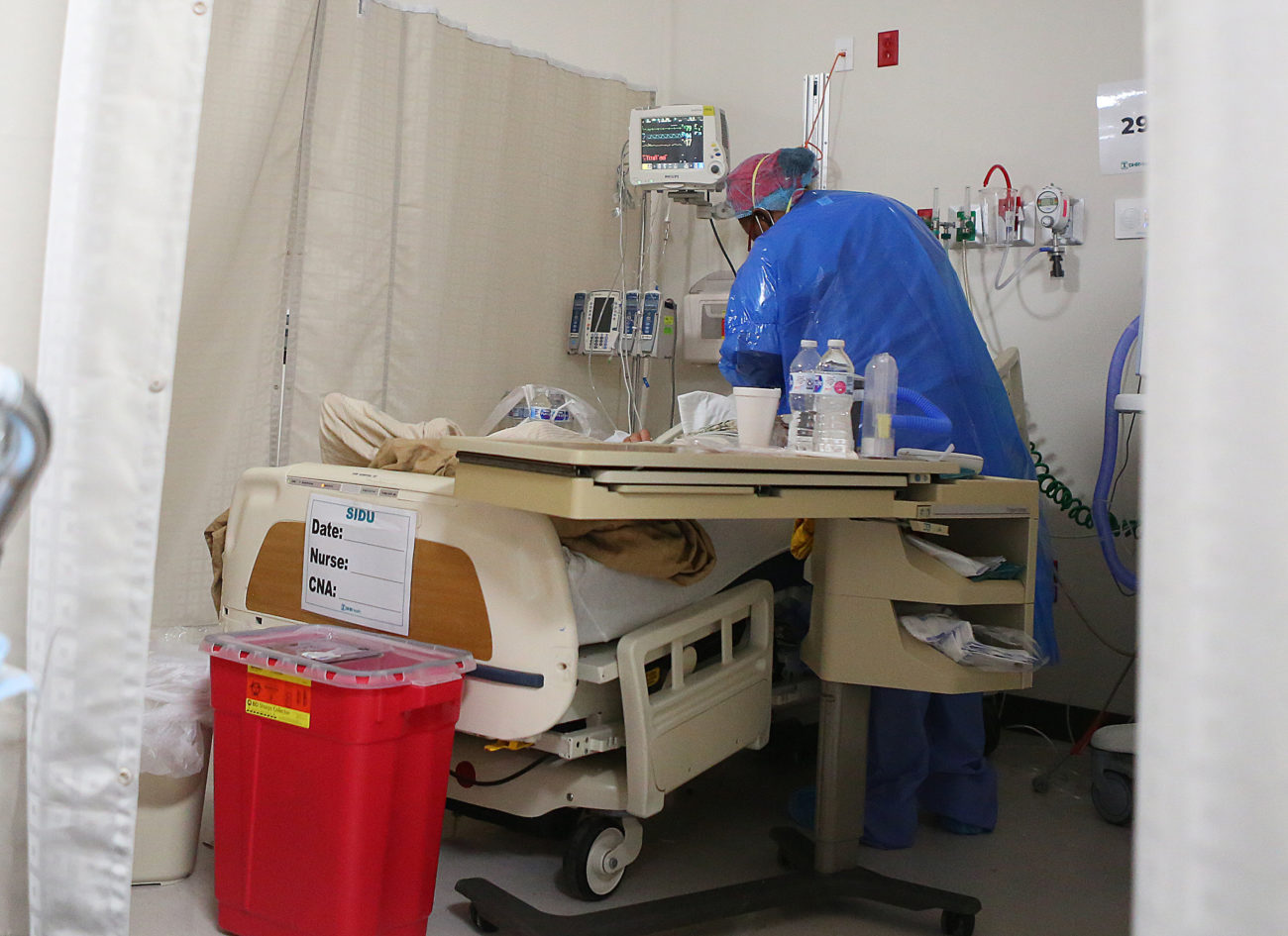
 COVID-19 hospitalizations in the Rio Grande Valley have reached levels not seen since August.
COVID-19 hospitalizations in the Rio Grande Valley have reached levels not seen since August.
As of Tuesday, COVID-19 hospitalizations in the Lower Rio Grande Valley Trauma Service Area were at 607, an 37% increase from two weeks prior and an 80% increase from one month prior.
The last time hospitalizations in the Valley were in the 600s was on Aug. 25 when 610 patients with COVID-19 were admitted into Valley hospitals.
Dr. Robert Martinez, chief medical officer at DHR Health, said the dynamic at the hospital is currently a bit different than it was when they were at or often near capacity in July and August but they were definitely starting to see the increase in patients that were testing positive for COVID-19.
On Thursday, Martinez said there were about 105 COVID-19 patients admitted out of a capacity of about 290 beds.
But the real factor, he said, is staffing.
“If you don’t have staffing, it doesn’t matter how many open beds,” Martinez said. “Once we have those staffing issues, we start having to stretch those nursing ratios and when you stretch the nursing ratios, the care is not as tight and so we don’t like to do that.”
“We like to have the nurses available to maintain our normal ratios and that’s impossible to do but we’re doing a really good job so far, I think, in doing that,” Martinez added.
One positive difference from the summer is that they’re able to treat COVID-19 patients more aggressively in the hospital emergency room without having to admit them.
“Those with mild to moderate symptoms, we’re treating them more aggressively in the emergency room — whether it’s with monoclonal antibodies, plasma, remdesivir — and sending them home,” Martinez said. “Otherwise, the hospitalizations would be higher right now.”
The ability to provide outpatient treatment through the use of those antibodies or therapeutics have allowed them to save hospital beds for patients with more severe symptoms.
“Otherwise, the numbers would be higher so I think those therapeutics that have come in the last couple of months have really been helpful to kind of take the pressure off of the system a bit,” he said.
However, while the availability of more treatments has alleviated some pressure, hospitals all over the country, not just in the Valley or the state, are seeing an increase in hospitalizations, leading Martinez to worry that resources will be stretched thin.
“In July, the difference is there were a few fires around the country, a few hotspots in Texas,” he said. “Right now, it’s like the whole country is on fire and so you’re definitely going to get a shortage of people, equipment, and all of those things so I worry about it a little bit more because there won’t be as many places to pull from, as far as resources are concerned.”
“Whether it’s nurses and people availability, whether it’s equipment like ventilators, oxygen tanks, or even basic supplies like high-flow face masks that people need and so those concerns always come to mind when it’s very overwhelming around the country,” Martinez said.
So far, DHR has been able to make do with the staff they have, according to Martinez, despite the high number of activity at the main hospital which Martinez estimated was about 70% full with patients needing major procedures due to strokes or heart attacks.
“We’ve been able to accommodate those patients, thank goodness, right now because we have to share staff in between both,” he said.
Still, they are trying to prepare and thus they are currently in talks with state officials about obtaining more resources in the event that there is an even bigger surge of COVID-19 hospitalizations.
“It’s been difficult,” Martinez said, “But there’s some more staff that we’re looking at, hopefully, getting because it’s hard work.”



